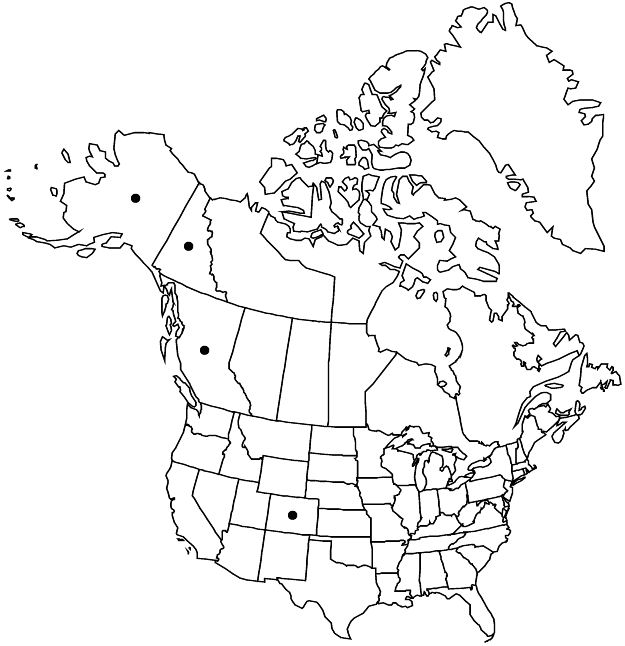Viola biflora
Sp. Pl. 2: 936. 1753.
Plants perennial, caulescent, not stoloniferous, 3–20 (–25) cm. Stems 1–3+, ascending or erect, leafy proximally and distally, glabrous, on caudex from fleshy rhizome. Leaves basal and cauline; basal: 2–3 (–4); stipules ovatelanceolate, ovate, or oblong, margins entire, apex ± acute; petiole 1.5–15 cm, glabrous; blade broadly reniform to orbiculate, 0.5–4.6 × 0.9–6.4 cm, base cordate, margins crenate to crenate-serrate, ciliate, apex obtuse, rounded, or truncate, rarely with terminal point, abaxial surface sparsely puberulent on veins, adaxial surface glabrate to ± densely puberulent; cauline similar to basal except: stipules lanceolate, ovate, or oblong, margins entire to erose, apex acute to obtuse; petiole 0.3–7 (–10) cm; blade sometimes ovate, 0.8–3.7 × 1–4.8 cm. Peduncles 2–9 cm, usually glabrous. Flowers: sepals with or without purple stripe on both sides of midvein, narrowly lanceolate to oblong, margins ciliate or eciliate, auricles 0.5–1 mm; petals deep lemon-yellow on both surfaces, lower 3 and often upper 2 brownish purple-veined, lateral 2 beardless, lowest 6–15 mm, spur yellow to yellowish green, gibbous, 2–2.5 mm; style head beardless; cleistogamous flowers axillary. Capsules oblong-ovoid, 3–6 mm, glabrous or sparsely pubescent. Seeds purple, sometimes streaked with light and dark-brown, 1.5–2.5 mm.
Distribution

B.C., Yukon, Alaska, Colo., Europe, Asia
Discussion
Varieties 5 (2 in the flora).
Viola biflora may be the most widely distributed species of the genus in the Northern Hemisphere. Although occurring most often in mountainous areas at high elevations, it is known from Alaska near the coast at elevations of ca. 45 m (PNW Herbaria Portal 2010) and has been reported from lowland meadows in Kamchatka (V. B. Baird 1942), and is occasionally found near sea level in exposed rocky habitats on the west coast of the Queen Charlotte Islands (R. A. Calder and R. L. Taylor 1968).
Sometimes described as high latitude, circumpolar, Viola biflora also occurs in mid latitudes north of the equator. It is not truly circumpolar; it does not occur in eastern Canada or in Greenland. The deeply cleft style head sets V. biflora apart from all other species in North America. V. B. Baird (1942) suggested that the occasional presence of two cleistogamous flowers in the axil of the same leaf may account for the name “biflora.”
H. N. Ridley (1930) said that in Europe, deer (Cervus dama Linnaeus and Rangifer tarandus Linnaeus) may play a role in the dispersal of Viola biflora; seeds have been recovered from their droppings.
Nonflowering Viola biflora can be confused with V. renifolia where their ranges overlap in Yukon, Alaska, and Colorado.
Selected References
None.
Key
| 1 | Lowest petal 6–10 mm; seeds 1.5–2 mm; sepals usually without purple stripe; Yukon, Alaska, Colorado. | Viola biflora var. biflora |
| 1 | Lowest petal 11–15 mm; seeds 2.5 mm; sepals usually with purple stripe; Queen Charlotte Islands, Vancouver Island, British Columbia. | Viola biflora var. carlottae |
"thick" is not a number. "narrow" is not a number.